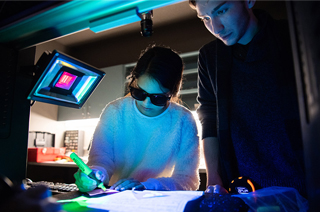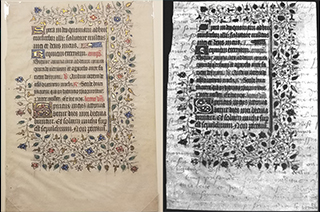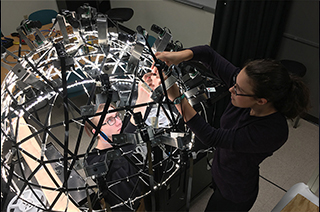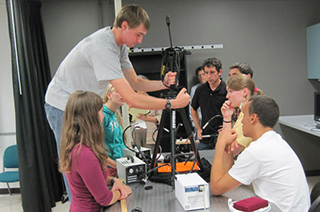Freshman Imaging Project
The imaging science major at RIT begins with a year-long, project-based class in a free-form learning environment and culminates with an independent research project under the guidance of center faculty. This revolutionary approach to education has been so successful at the undergraduate level, that incoming Ph.D. students now do something similar, taking on a new project at the start of each year.
Watch the video below and hear from students in the program talk about this unique freshman experience offered by RIT College of Science in the Chester F. Carlson Center for Imaging Science.
With a diverse skill set in physics, computer science, engineering, and math, Imaging Science BS graduates are recruited from RIT to work in some of the best companies in the world including L3Harris, Oculus, NBC Universal, and Lockheed Martin.
News
First-year students develop imaging system to study historical artifacts
A multidisciplinary team of first-year students has been working to develop an imaging system that can reveal information hidden in historical documents for their Innovative Freshmen Experience project-based course.
RIT students discover hidden 15th-century text on medieval manuscripts
RIT students discovered lost text on 15th-century manuscript leaves using an imaging system they developed as freshmen.
Imagine RIT Preview: Virtual Bugs
A multidisciplinary team of first-year students designed and built a new system to tackle the problem for their project-based Innovative Freshmen Experience class and will showcase the final product at the Imagine RIT.
RIT’s Imaging Science Freshmen Get the Keys to the Lab—and a Mission
Students taking the Innovative Freshman Experience are learning about imaging science by building an imaging system from scratch. Imaging science major Kevin Dickey adjusts the tripod as the class tests its proof-of-concept prototype.
Start in Imaging Science.
Land Somewhere Amazing.





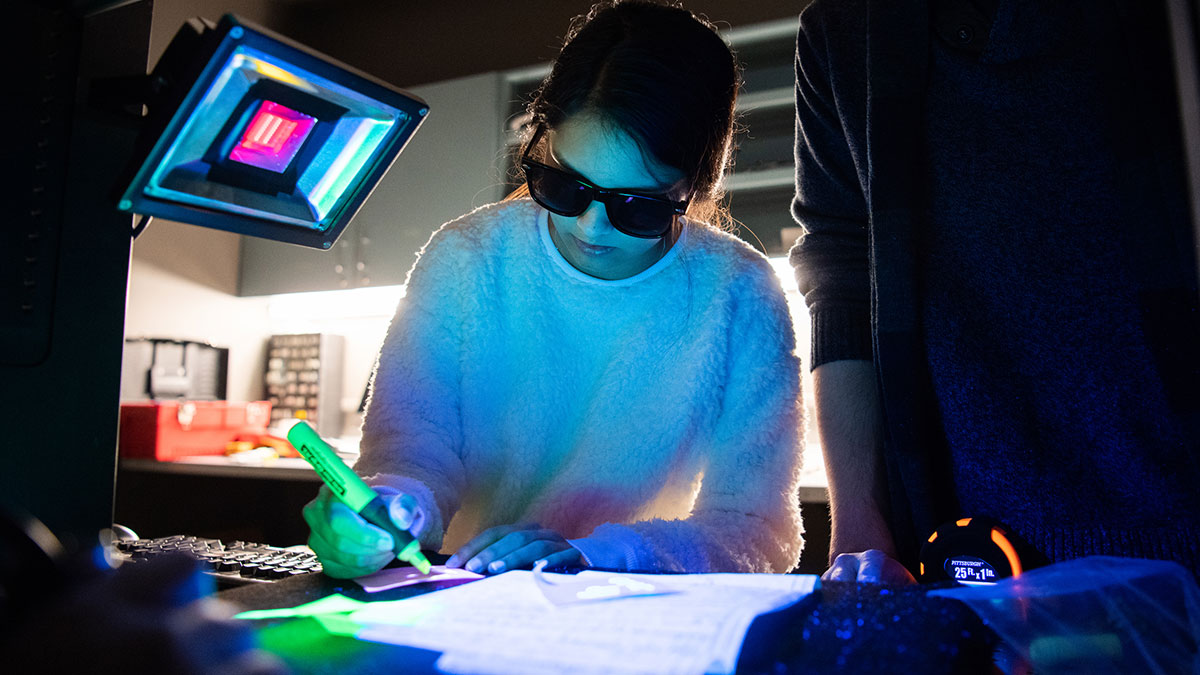
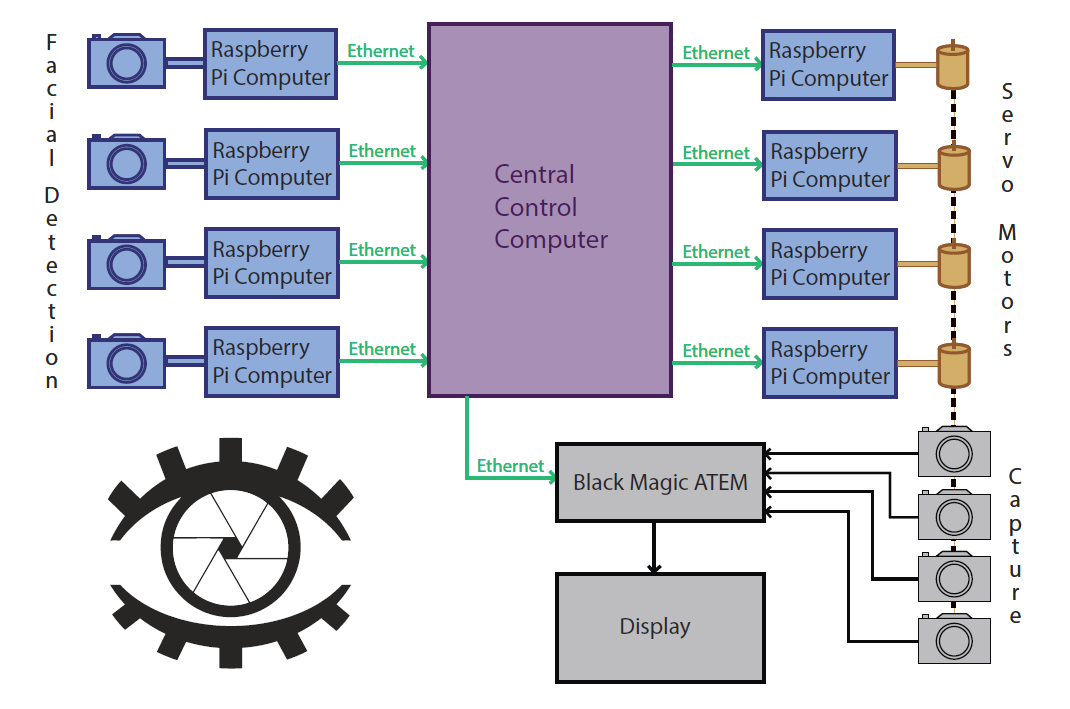
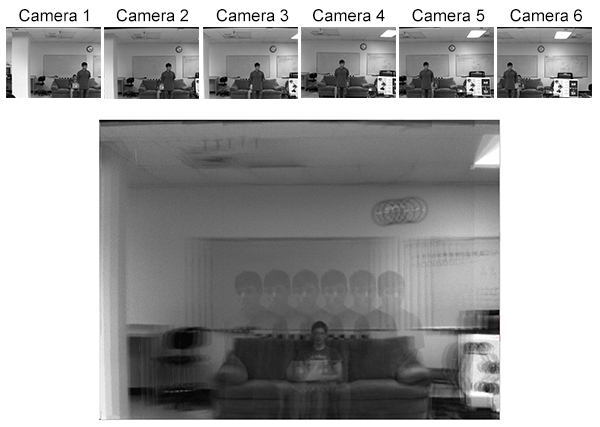
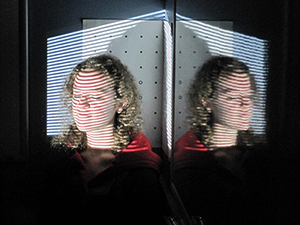 This system uses Structured Light technology in order to gather 3D data. Several patterns of alternating dark and light bars with different spatial frequencies and orientations are projected onto the subject. Two cameras take pictures of the patterns, and the system computes the deviation of the bars with respect to a flat reference to determine depth information, The system renders a 3D point cloud that is used for visualization and allows the physician to obtain specific measurements.
This system uses Structured Light technology in order to gather 3D data. Several patterns of alternating dark and light bars with different spatial frequencies and orientations are projected onto the subject. Two cameras take pictures of the patterns, and the system computes the deviation of the bars with respect to a flat reference to determine depth information, The system renders a 3D point cloud that is used for visualization and allows the physician to obtain specific measurements.